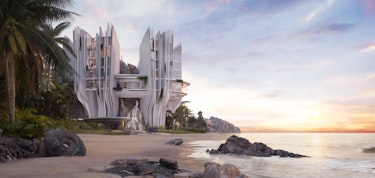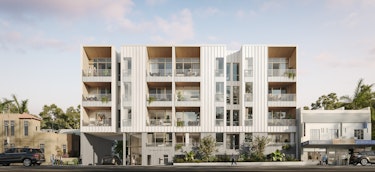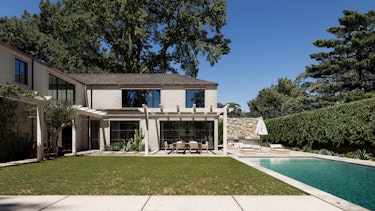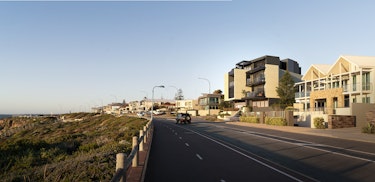A different approach to work for architects is virtual reality. For your design workflow, it offers a powerful tool with limitless potential when combined with real-time visualization tools. It can assist with design development, needs fulfillment, and customer retention. Convincing customers and users that the design is in good hands and will appear exactly as imagined or better is one of the most difficult components of the architectural industry to achieve. Virtual reality (VR) is now very much a possibility for architects of all backgrounds, thus there is no longer any question about accessibility as to why architects who choose not to employ VR in their design process are at a huge disadvantage. Isn't it the truth about the creative industries?
When it comes to creative ideas and how the product will turn out in comparison to the prototypes, the end customer may always take a leap of faith. But as time and tide change, so does technology! Virtual reality's development has done wonders for bridging the gap between designs and reality and giving architectural representations a boost. The way architects operate has changed significantly as a result of AR and VR.

The benefits of virtual reality in architecture:
Creating Individual Experience
Virtual reality is a wonderful tool to employ since it can be applied early in the creative stages to further investigate the connections between various locations, light, structure, and materiality. Instead of only gazing at a scale model or visual rendering, the utilization of an immersive representation offers a chance for improved quick knowledge and grasp of key design features. When seeing a two-dimensional render, those who are not designers or architects may find it difficult to comprehend spatial connections and scale; however, using virtual reality is more accessible and can elicit a positive response in the same way that actual building does. Consequently, any last-minute rushed judgments made on site as a result of the discrepancy between the design and actuality may be avoided. The idea, method, and design are all made much clearer, which increases the capacity to convey design purpose and gives the customer a genuine sensation of living the place from the very beginning of the project. Additionally, this establishes reasonable expectations and aids in appropriately instilling the experience value of the venue from the pitch stage on.

Understanding the Space
Software for virtual reality design offers much more than just interaction. It also aids your consumers in comprehending the spatial relationships you've created. More so than engineers, architects frequently design the interiors of buildings. Rather than receiving their cues from you, your customer may get a sense of how such rooms function.
Keep in mind that not everyone has an architect's mind. Some of your clients won't be able to see how the areas go together from a 2D floor plan, even though you probably can. You could discover that your clients have trouble assembling the parts, even with a 3D design. It makes sense that way. After all, your clients lack your level of training. But you must also take it into consideration. This required extensive client discussion on the model in the days before VR.
You no longer need to do that with VR. You may position your customer squarely in the model's center and let them explore. This virtual "world" gives a far better idea of what you're going to build for them in the actual world. Instead of attempting to visualize the place, they can feel it and explore it.
Imagine how incredible it must feel to a person who has never experienced virtual reality before. Your client is given the opportunity to explore your model rather than listening to a dry model presentation.

Easy to operate
Real-time visualization software allows you to enjoy VR without having to be an expert in the field. Your VR headset will display your model after only a few clicks, allowing you to see your structure before it is ever constructed.
Conducting design reviews with your team and other project stakeholders is simple when VR is integrated into your design and visualization process. A virtual view of the building model may make it quick and simple to find mistakes and rectify them before construction starts, saving time and money and increasing the likelihood that the project will finish on schedule. Additionally, keep the future in mind. You can differentiate yourself from the competition with that investment, which will help you gain more jobs. Virtual reality design software also makes it simpler for clients to identify problems that need to be fixed. Therefore, you'll waste less time attempting to identify the model's flaws and avoid moving forward with a concept that your customer finds objectionable.

Scope for development
Despite not being an advantage unique to VR, getting in early is something that many successful pioneering firms do. Despite the advantages, most engineering and architecture organizations don't employ virtual reality. They are so set in their ways that they won't spend the money or take the risk necessary to adopt a new technology.
More daring businesses now have a chance as a result. Early adopters of virtual reality will have an advantage over rivals in taking advantage of its characteristics. Once more, acquiring new employment is why this is so crucial. You may distinguish yourself from other businesses that provide a series of uninteresting drawings and models by using virtual reality design software.Architects are increasingly combining BIM (Building Information Modeling) software with VR gear like the HTC Vive and Oculus. According to Kim Baumann Larsen, architect and CEO of the AR/VR design and consulting business Dimension Design, "this will enable architects and clients alike to properly comprehend the spatial aspects of the project." "This spatial awareness should increase clients' trust in the design and cut down on time spent in meetings and lateral design adjustments," says the author.

Virtual reality technology in design aids in building and optimizing linkages between various locations, light, structure, and materiality utilized in a project from the conception stage through to implementation. What benefits does virtual reality design software provide for your company, then? You can truly impact your clientele thanks to virtual reality's various capabilities. When other companies are merely talking and pointing at models, your company can provide interaction. Simply said, this increases the impact you have on potential customers. By utilizing virtual reality design tools, you may distinguish out from the competition and leave clients wanting more.
.jpg?ixlib=gatsbyFP&auto=compress%2Cformat&fit=max&q=75&w=375)